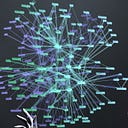Python is a popular programming language that is widely used for a variety of tasks, such as web development, data analysis, and machine learning. When starting to work with Python, one of the first things you will learn is the different data types available to you. In this article, we will take a closer look at the different data types in Python and how they can be used.
The first data type we will discuss is the integer. An integer is a whole number, such as 1, 2, or 3. In Python, you can create an integer by simply assigning a whole number to a variable, like this:
x = 5Another common data type is float. A float is a decimal number, such as 3.14 or 2.718. In Python, you can create a float by assigning a decimal number to a variable, like this:
y = 3.14Next, we have the string data type. A string is a sequence of characters, such as “hello” or “goodbye”. In Python, you can create a string by enclosing a sequence of characters in single or double quotes, like this:
z = "hello"Python also has a Boolean data type, which can have one of two values: True or False. You can create a Boolean value by using the keywords True and False, like this:
a = True
b = FalseIn addition to these basic data types, Python also has several built-in data structures that allow you to store and organize data in a specific way. For example, the list data type allows you to store a collection of items in a single variable. You can create a list in Python by enclosing a collection of items in square brackets, like this:
my_list = [1, 2, 3, 4, 5]Another built-in data structure is the tuple, which is similar to a list but is immutable, meaning that its elements cannot be changed once they are created. You can create a tuple in Python by enclosing a collection of items in parentheses, like this:
my_tuple = (1, 2, 3, 4, 5)Lastly, we have the dictionary data type used to store key-value pairs. You can create a dictionary in Python by enclosing a collection of key-value pairs in curly braces, like this:
my_dict = {"name": "John", "age": 30}In conclusion, Python has a variety of data types and data structures that you can use to store and organize data in your programs. Understanding Python’s different data types and data structures are essential for writing efficient and effective code. I would suggest practicing coding using different data types to have a better understanding of them.
